The sooty head mushroom (Tricholoma portentosum) is a large, distinctive species in the Tricholoma family. This mushroom earned its common name from its characteristic dark, sooty-colored cap. Although its color makes it blend in with the forest floor, the sooty head mushroom’s size makes it hard to miss. This is an edible mushroom with a mild taste. Unfortunately, it has some problematic lookalikes, so this is only for experienced foragers. Gray-capped Tricholoma species are generally tricky, so forage with caution.
- Scientific Name: Tricholoma portentosum
- Common Names: Sooty Head, Streaked Tricholoma, Charbonnier, Sticky Gray Trich (In the UK, it is known as Coalman, Dingy Agaric, and Streaky Tricholoma)
- Habitat: On the ground in sandy soil, usually with pine trees.
- Edibility: Edible
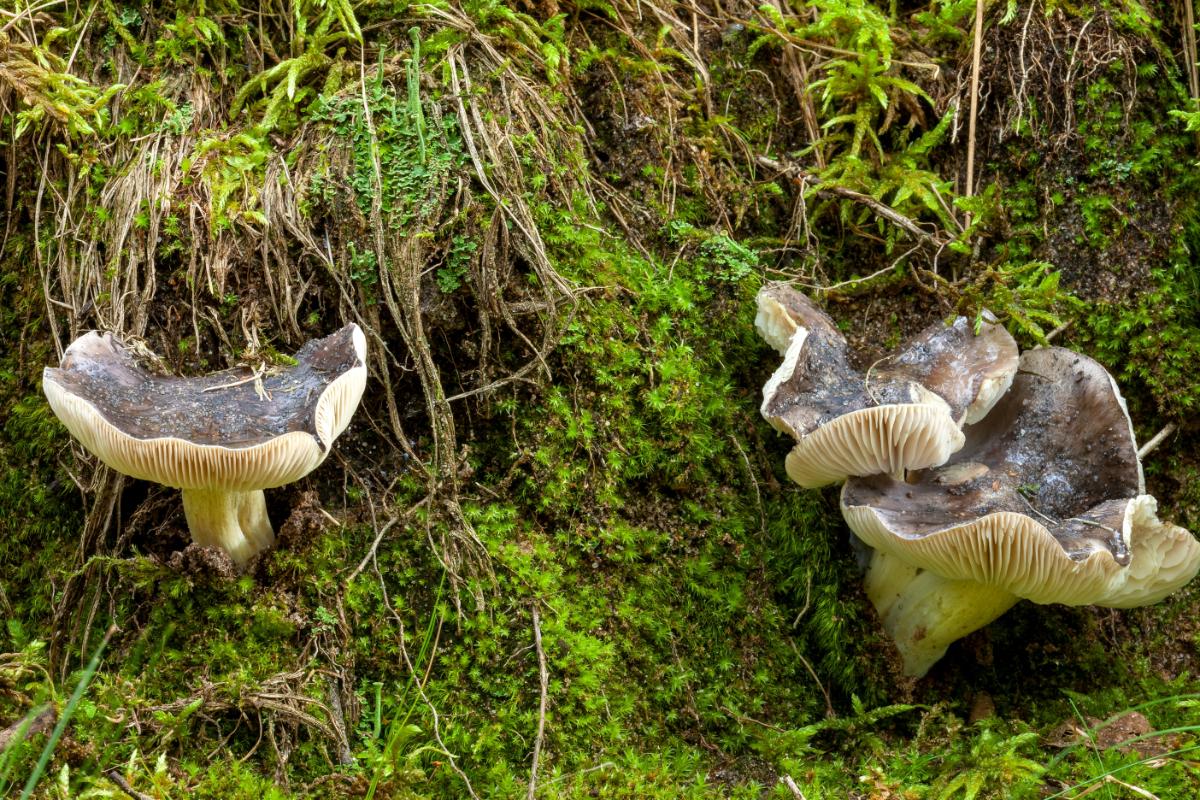
Jump to:
All About Sooty Head Mushrooms
The sooty head mushroom is part of the genus Tricholoma and a relative of the much sought-after Matsutake mushroom. Its most distinctive features are its size and the dark gray cap with dark streaks.
This mushroom was first described as Agaricus portentosus by Elias Magnus Fries in 1821. Later, in 1872, Lucien Quélet reclassified it as Tricholoma portentosum. The genus name comes from Greek words meaning ‘hairy fringe.’ Portentosum translates from Latin as ‘marvelous’ or ‘prodigious,’ which is a reference to its taste.
There are three variations of this species:
- var. album: Has a pure white cap
- var. lugdunense: Features a lighter-colored cap
- var. boutevillei: Known for its very dark cap, typically found near oak and beech trees
The sooty head is particularly interesting because of its remarkable genetic consistency. In research conducted in 2017, scientists discovered that this mushroom maintains identical genetic profiles across all three continents where it grows. This finding suggests a strong evolutionary stability in the species.
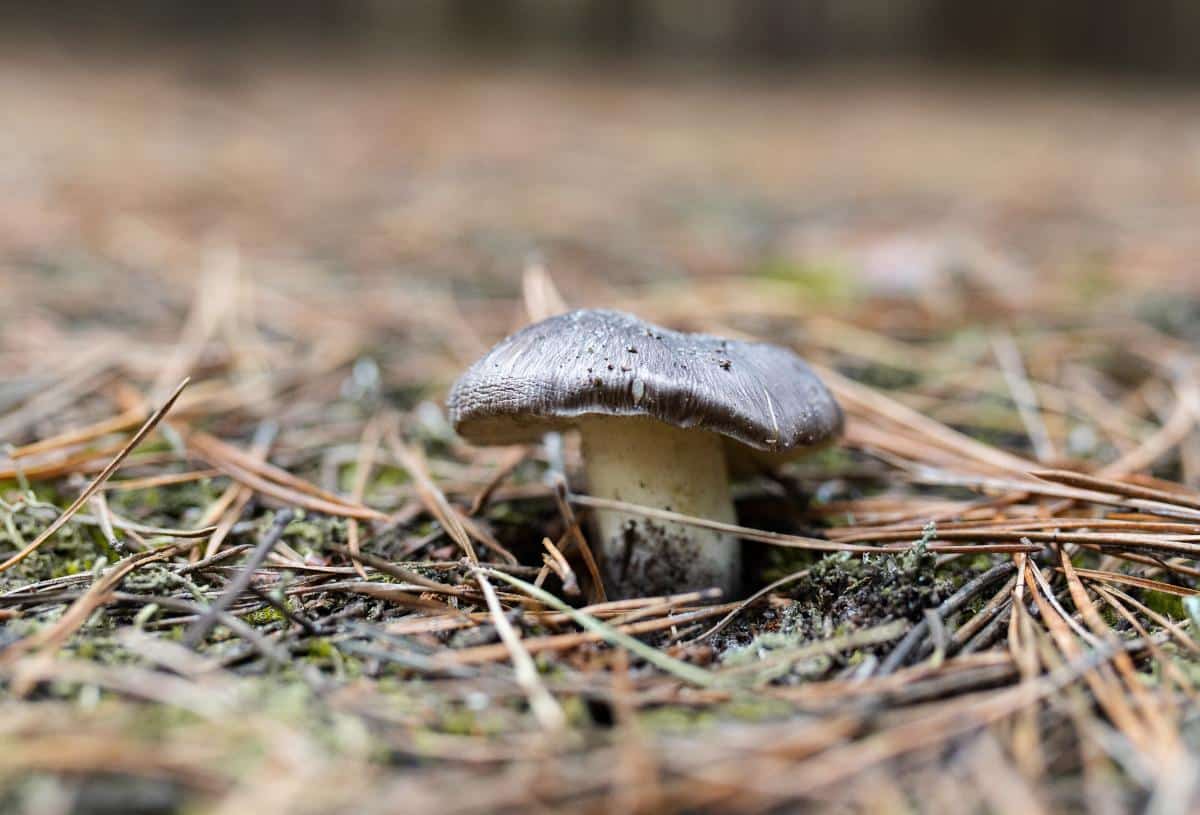
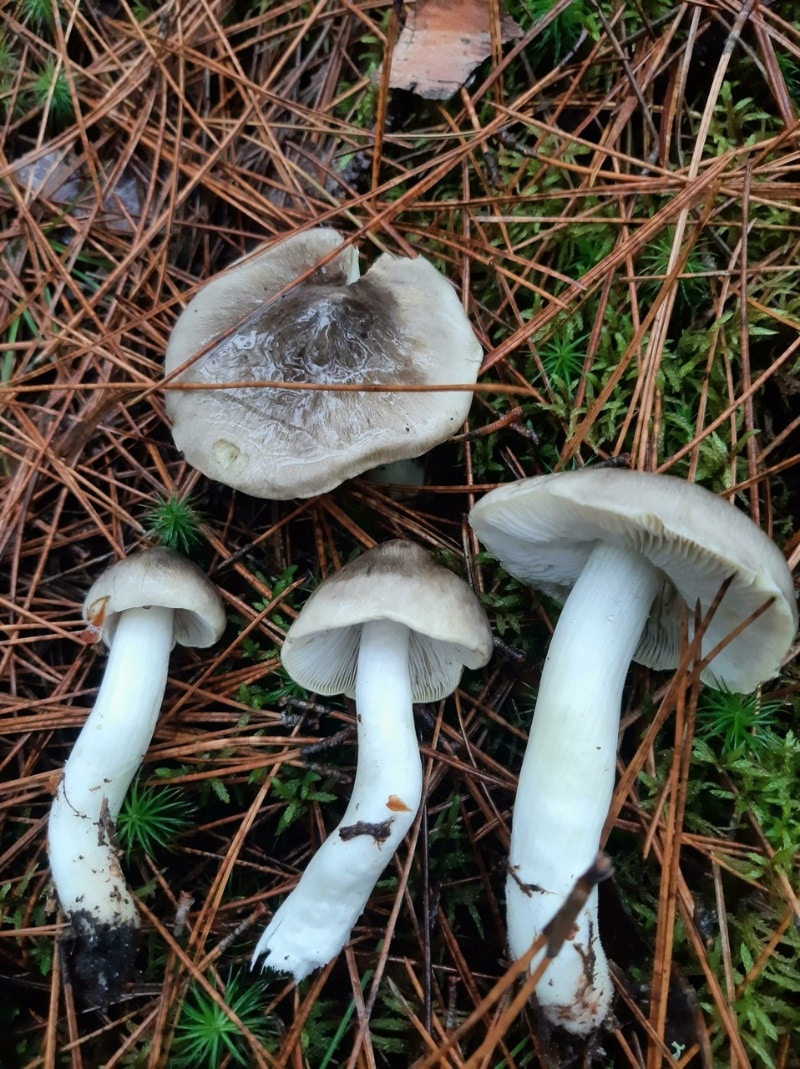
Sooty Head Mushroom Identification
Season
The sooty head mushroom fruits in late autumn into early winter.
Habitat
The sooty head is an ectomycorrhizal species, meaning it develops a mutually beneficial relationship with its host trees. It most commonly grows alongside Scots pine (Pinus sylvestris) but also forms associations with other conifers, including hemlock, fir, and other pines. It may also appear under oak and beech trees.
The sooty head prefers well-draining sandy substrates. They’re often found in pine plantations and coastal forests where pine trees and sandy soil go hand in hand.
This mushroom grows from the ground. It never grows on wood or trees. It fruits individually but is often found in scattered or dense patches. Sooty head mushrooms are erratic fruiters.
Sooty head mushrooms grow across North America but are most common in California, the Pacific Northwest, the Northeast, and the Southeast. It seems to be mostly absent from the middle of the country.
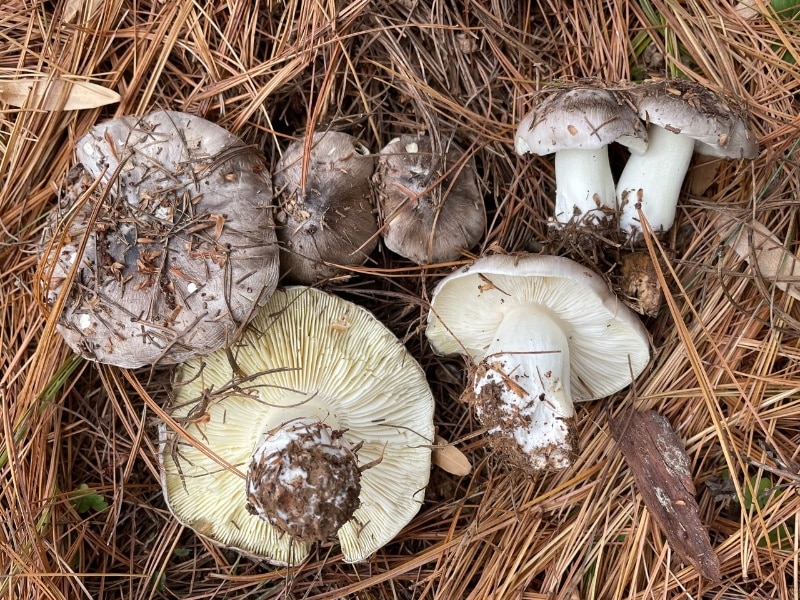
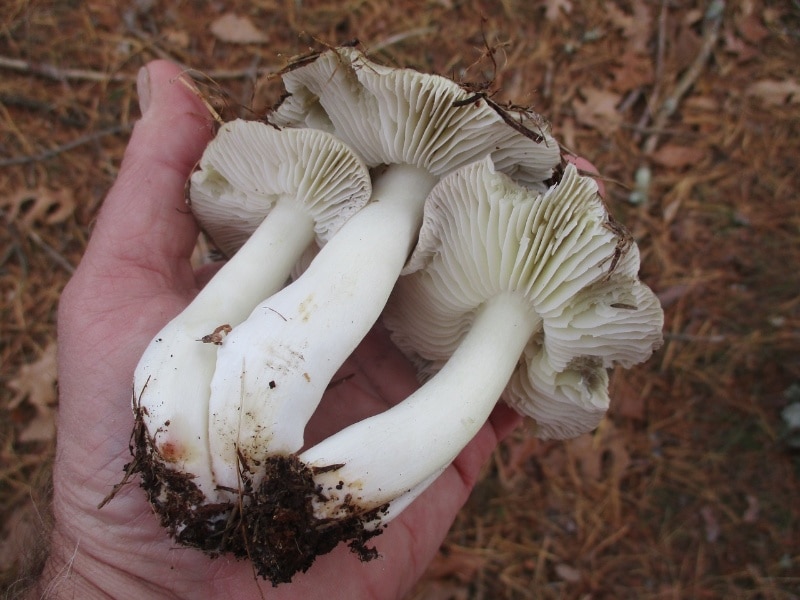
Identification
Cap
The cap measures 2-4.5 inches across. It is dark gray to gray-brown with distinctive darker streaks radiating from the center. The edges of the cap are irregular and usually bumpy looking. With age, the cap edge’s color fades and may take on yellowish or purple tinges.
When wet, the surface becomes notably sticky and glossy. In dry conditions, it looks silky. The cap starts out cone-shaped but then flattens out with age. In the center of the cap is a pronounced central bump. This is a large, chunky mushroom with thick cap flesh and a pointed center.
Gills
The gills are spaced broadly and fairly distant and attached to the stem. The gills start white but then start yellowing as the mushroom matures. The gill edges often have an irregular, sometimes serrated pattern.
Stem
The stem is 1.4-4.7 inches tall and cylindrical with a slightly swollen base. It starts out white but develops a distinctive yellow tinge at the top as it matures. It may develop brownish spots with age. The stem is often lined vertically with thin fibers that give it a twisted look. It is solid inside.
Taste and Smell
It has a mild, faintly farinaceous (flour-like) odor and taste.
Flesh Color and Staining
The flesh is firm and white. It often develops yellowish tones in the outer portions. The flesh may turn grayish when cut or bruised.
Spore Print
The spore print is white.
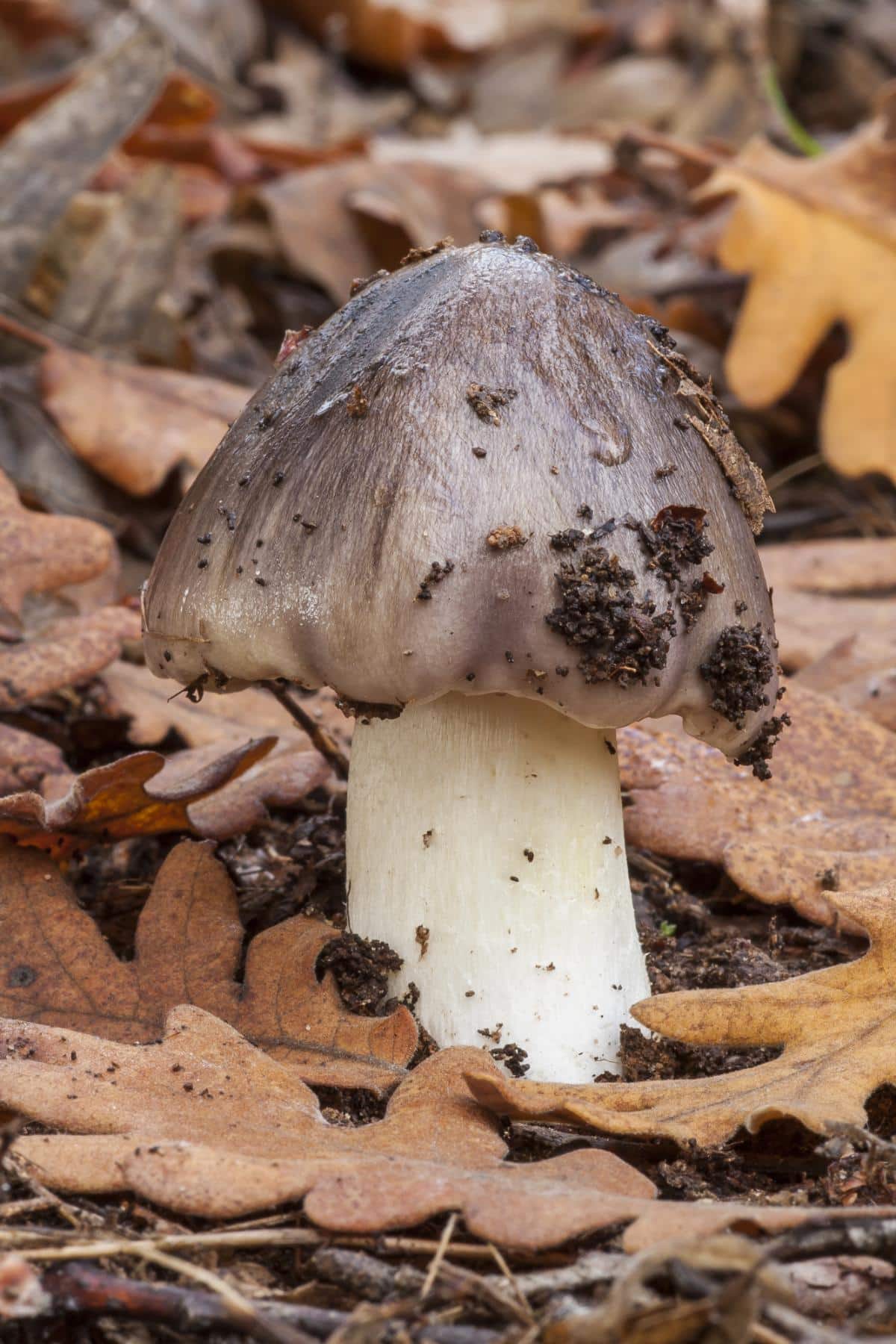
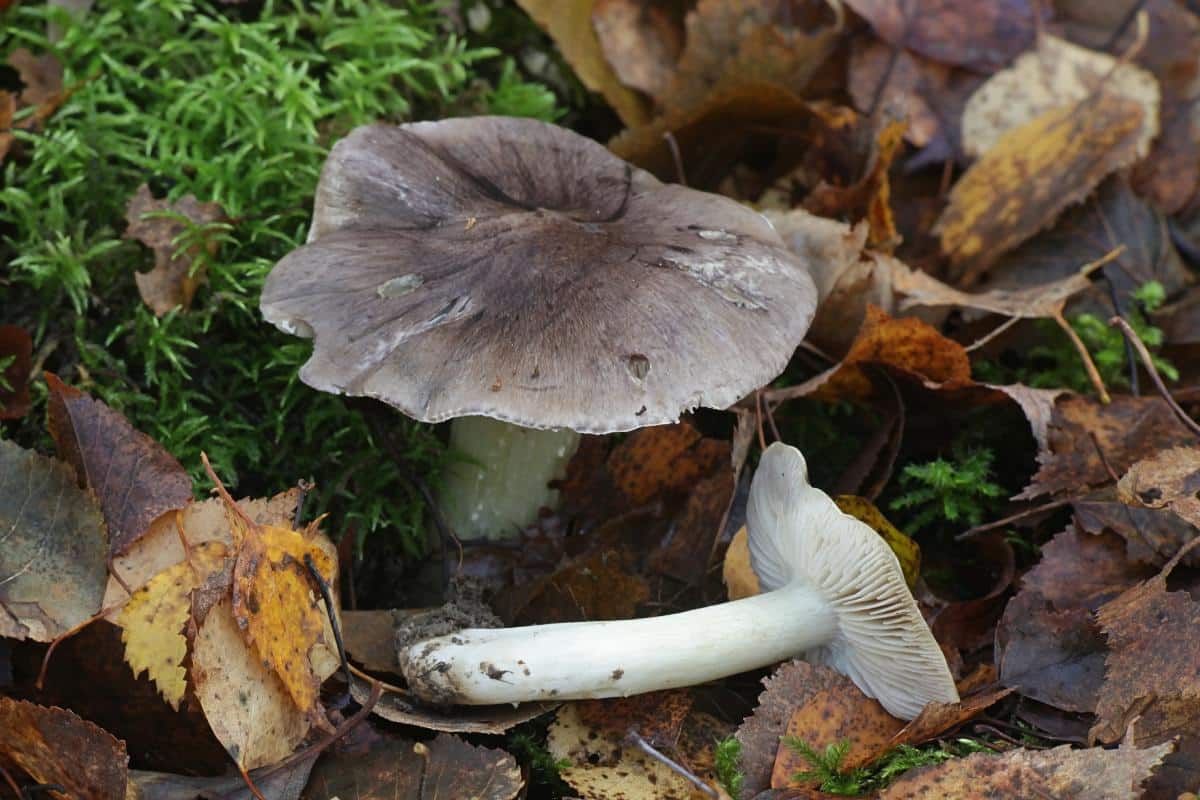
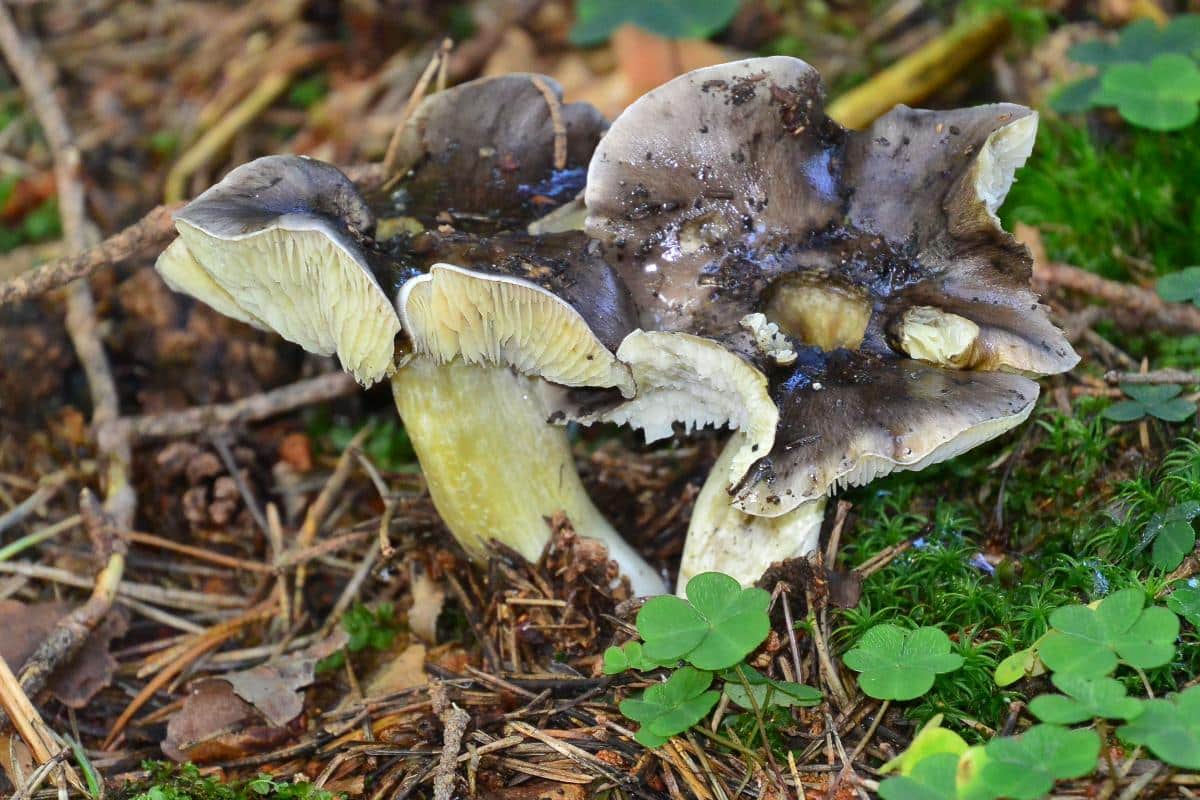
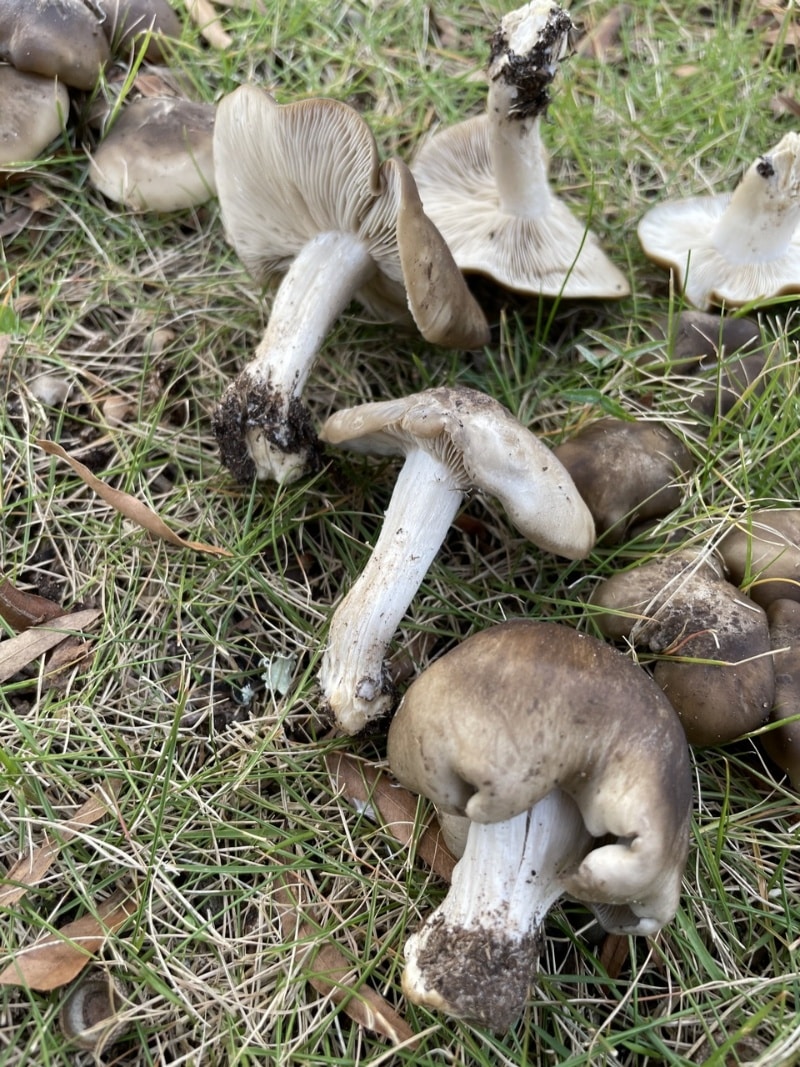
Sooty Head Mushroom Lookalikes
Spotted Tricholoma (Tricholoma pardinum)
This is a poisonous species that could make you seriously ill. It is gray like the sooty head, but the cap surface is not smooth. The cap of the spotted tricholoma is pale gray, dry, and covered with dark brown or grayish scales. The scales should be enough to set it apart from the sooty head.
There are a few other differences, too, though. The spotted tricholoma gets much bigger than the sooty head, often reaching up to 6″ wide. Its gills are white like the sooty head, but they are not attached to the stem.
The spotted tricholoma is toxic, but it won’t kill you. It causes severe gastrointestinal distress, with symptoms lasting for 4-6 days.
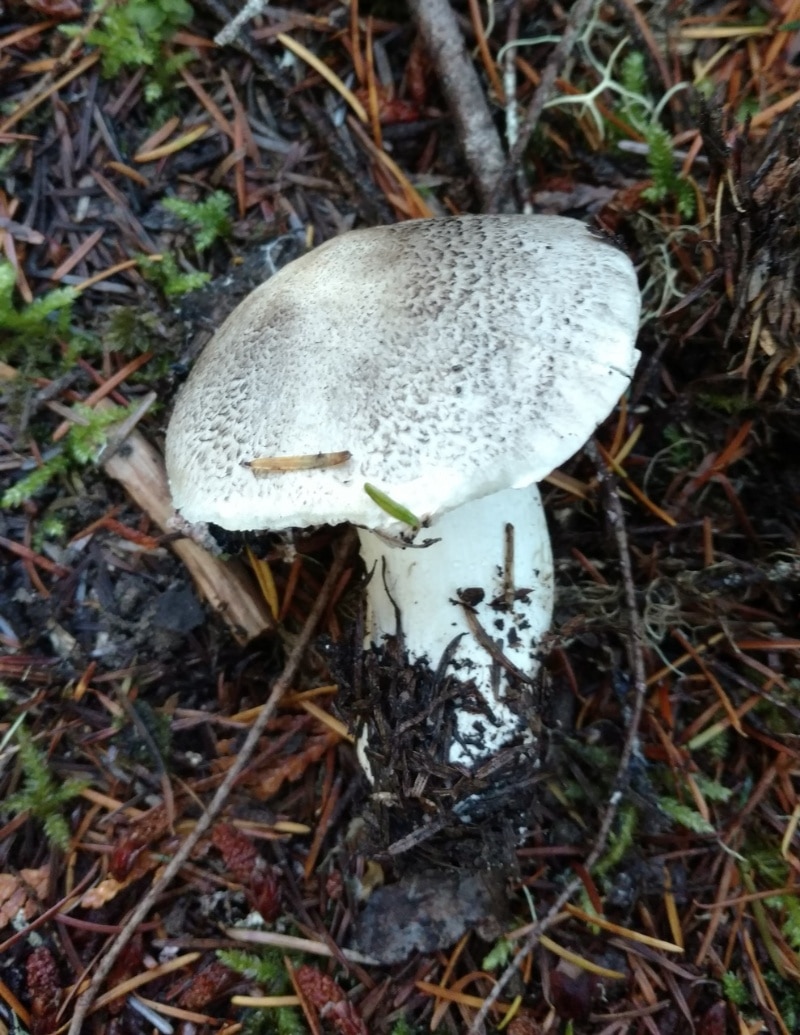
Ashen Knight (Tricholoma virgatum)
This species is inedible and thought to be poisonous. It has a silvery-gray cap and looks very similar to the sooty head. It has a very sharp cone-shaped cap, though, which is different from the sooty head’s raised bump. It also doesn’t have a distinctive smell and tastes extremely bitter. Lastly, the stem does not tint yellow with age.
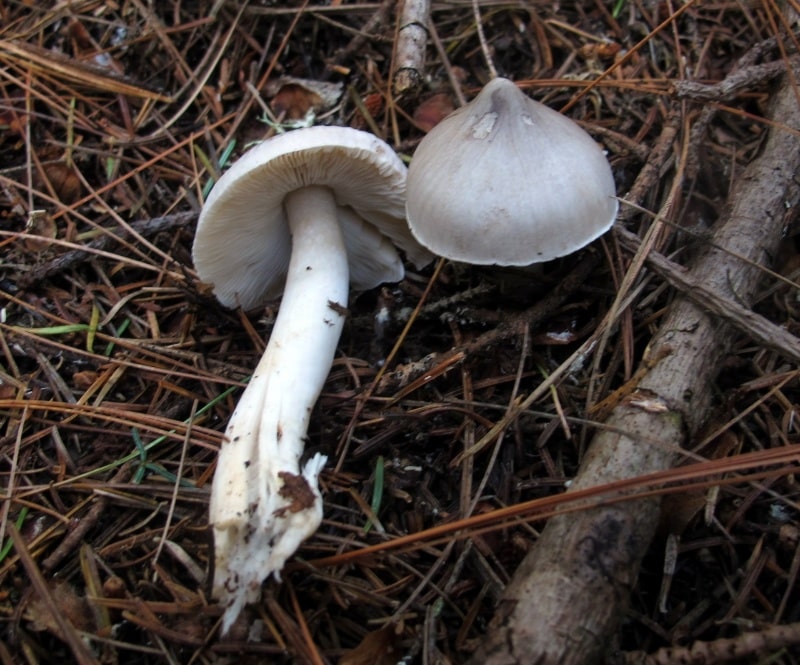
Yellow Knight (Tricholoma equestre)
The yellow knight could cause confusion when the sooty head specimen shows yellow tones or when the yellow knight ages to brownish yellow. But, there are pretty obvious key differences upon close inspection. The yellow knight’s cap is predominantly yellow with a brown-olive center. Its gills are yellow, though they may be so light they look whitish. The cap doesn’t have the blackish fibers across it like the sooty head. It also doesn’t have the distinct smell of the sooty head.
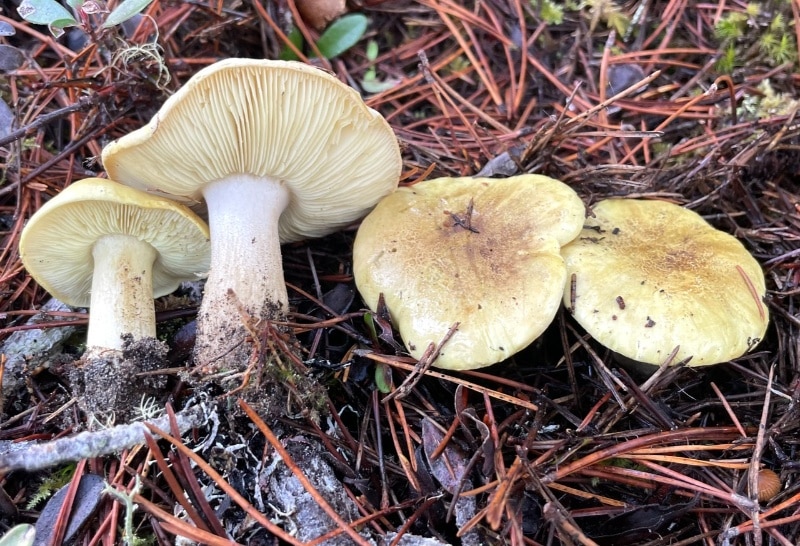
Tricholoma pullum
This lookalike species has a gray cap, but instead of the cap being upraised, it sinks in the middle with age. It is flat as opposed to having a bump in the center. The gills of this mushroom are pinkish to grayish, not white like the sooty head. It also grows with hardwoods like oak and beech, not conifers.
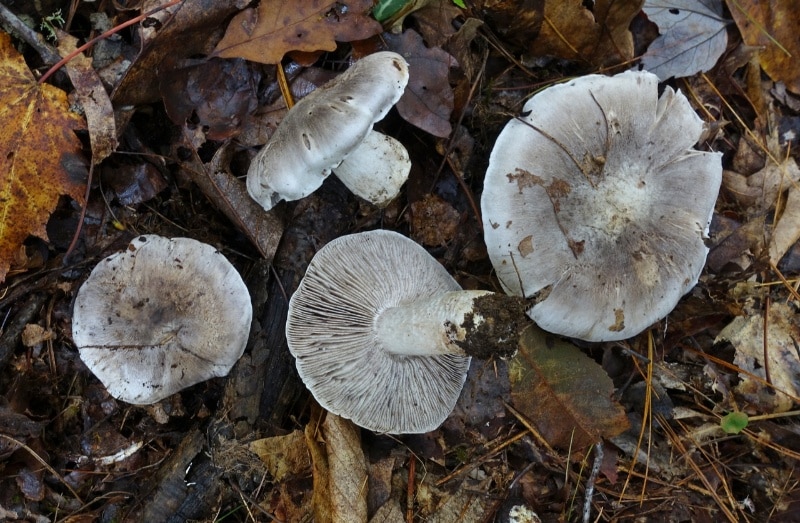
Sooty Head Mushroom Medicinal Uses
Studies show that Tricholoma portentosum contains valuable compounds with potential health benefits, though most research is still in the early stages.
Extracts from this mushroom have shown effectiveness against certain bacteria, particularly Bacillus species and the fungus Cryptococcus neoformans. The presence of β-glucans makes this mushroom particularly valuable, as these compounds can resist stomach acid and potentially support your immune system.
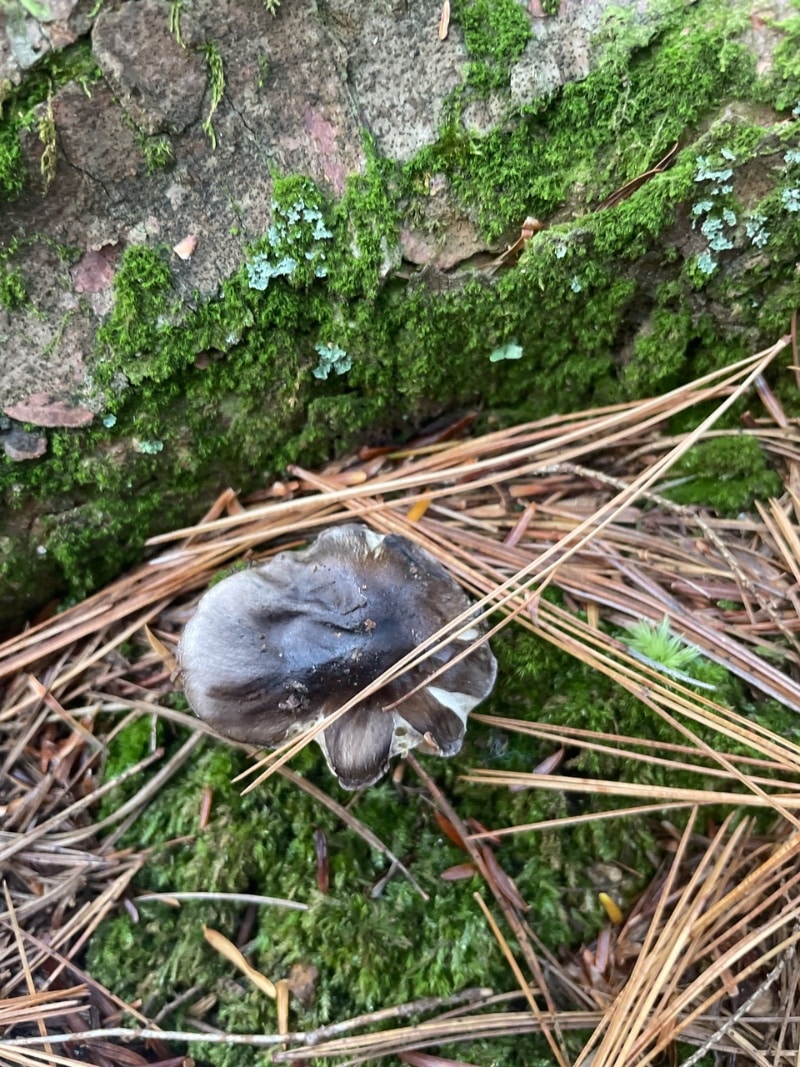
Sooty Head Mushroom Culinary Uses
The sooty head is a mild-tasting mushroom that becomes even more flavorful after a light frost. It is best sauteed simply with butter and garlic or herbs. It’s also excellent added to enrich and add bulk to stews and stir-fries.
What are the key features for identifying Tricholoma portentosum?
Tricholoma portentosum, or the sooty head mushroom, is characterized by a dark gray to gray-brown cap with darker streaks, broad and distant gills that are yellow with age, a cylindrical stem that develops a yellow tinge, and a mild, faintly flour-like odor and taste.
When do sooty head mushrooms grow?
Sooty head mushrooms are typically found in late autumn to early winter. They grow with conifers, particularly near Scots pine trees. They prefer sandy soil conditions and can also be found near oak and beech trees in some areas.
Are sooty head mushrooms edible?
Yes, sooty head mushrooms are edible. They have a mild taste that becomes more flavorful after a light frost. However, proper identification is crucial as there are similar-looking poisonous species.


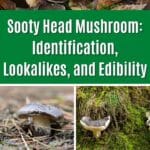
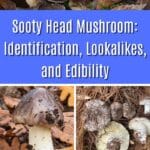
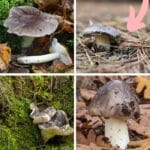

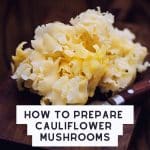
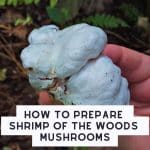
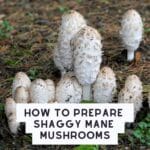
Leave a Reply